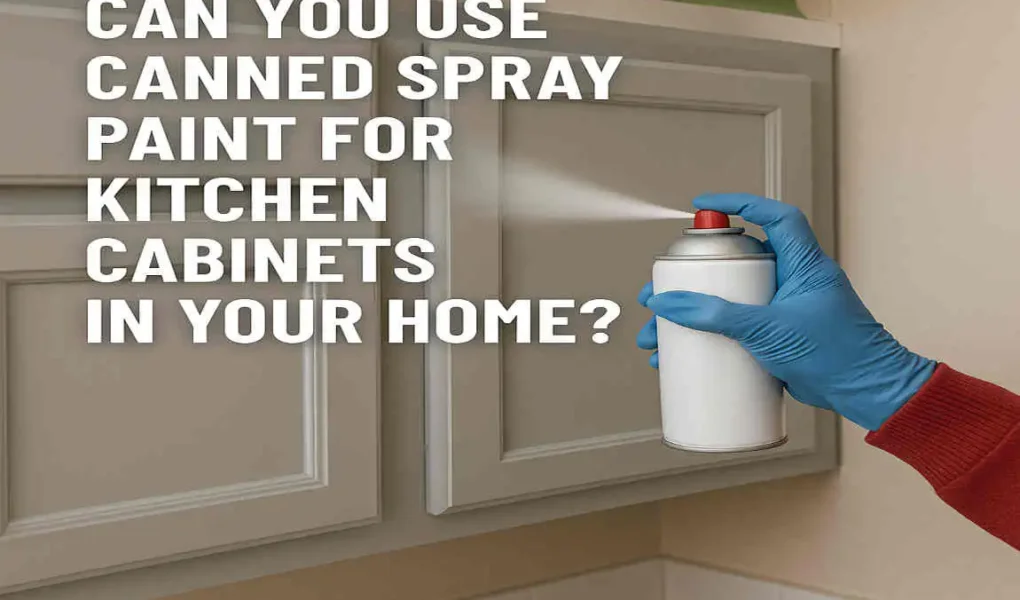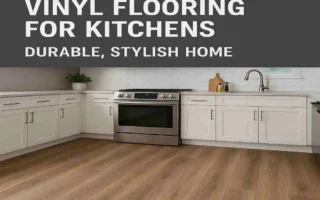Canned spray paint can be used to update the look of kitchen cabinets, but it must be appropriately applied for durability and safety. The cabinets should be well-prepared by cleaning off grease, lightly sanding, and applying a primer before multiple thin coats of paint. The paint should be allowed to fully cure before use to ensure it lasts long and withstands kitchen conditions. However, standard spray paints are not food-safe, so it’s important to avoid spraying directly on surfaces where food contact is frequent or to use specialized paints designed for home kitchen use to minimize risks from chemicals and fumes. Choosing the right spray paint, specifically formulated for cabinetry or kitchen surfaces, will yield the best results for home use.
Advantages of using canned spray paint for kitchen cabinet
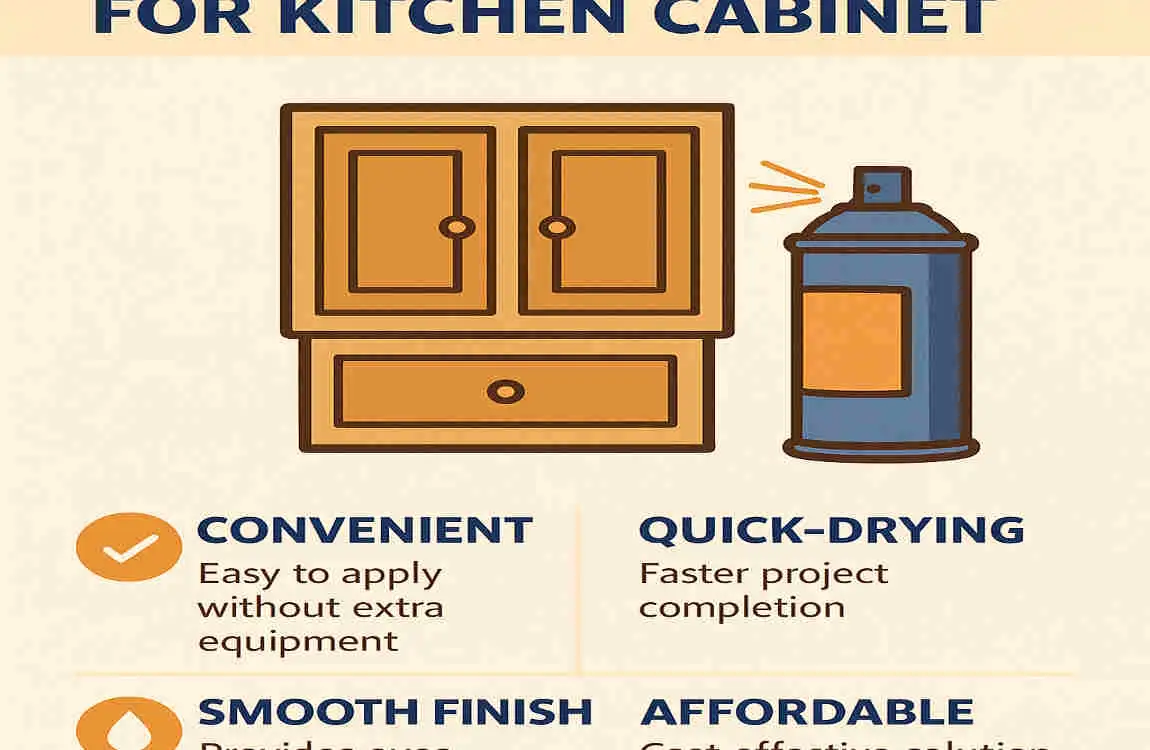
Canned spray paint offers several advantages for kitchen cabinets. First, it provides a smooth and even finish that is hard to achieve with traditional brushes or rollers. This means you can say goodbye to those unsightly brush strokes.
Another benefit is the speed of application. Spray painting allows you to cover large areas quickly, making the process much more efficient than using conventional methods. You’ll find yourself faster on the path to a refreshed kitchen.
It’s often more affordable than hiring professionals or purchasing high-end paints designed explicitly for cabinetry. DIY enthusiasts will appreciate this cost-effective option without sacrificing quality.
Disadvantages of using canned spray paint for kitchen cabinets
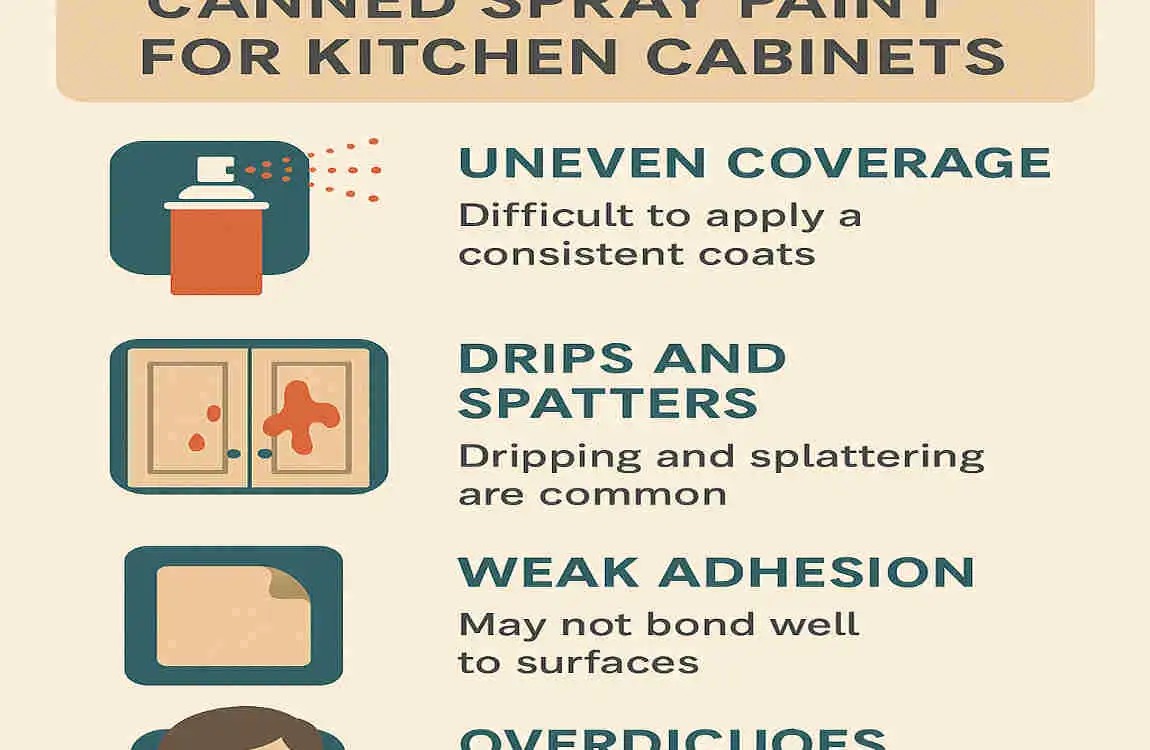
Using canned spray paint for kitchen cabinets does come with its drawbacks. One significant concern is the coverage. Spray paint can sometimes create uneven layers, leading to a patchy finish that may require multiple coats.
Another downside is durability. While some spray paints are designed to last, they often don’t match the resilience of traditional brush-on cabinet paints. The wear and tear from everyday use can lead to chipping or peeling sooner than expected.
Ventilation becomes crucial when using aerosol products indoors. If not applied in a well-ventilated area, harmful fumes could pose health risks and leave lingering odors long after painting has finished.
Preparation before spray painting your cabinets
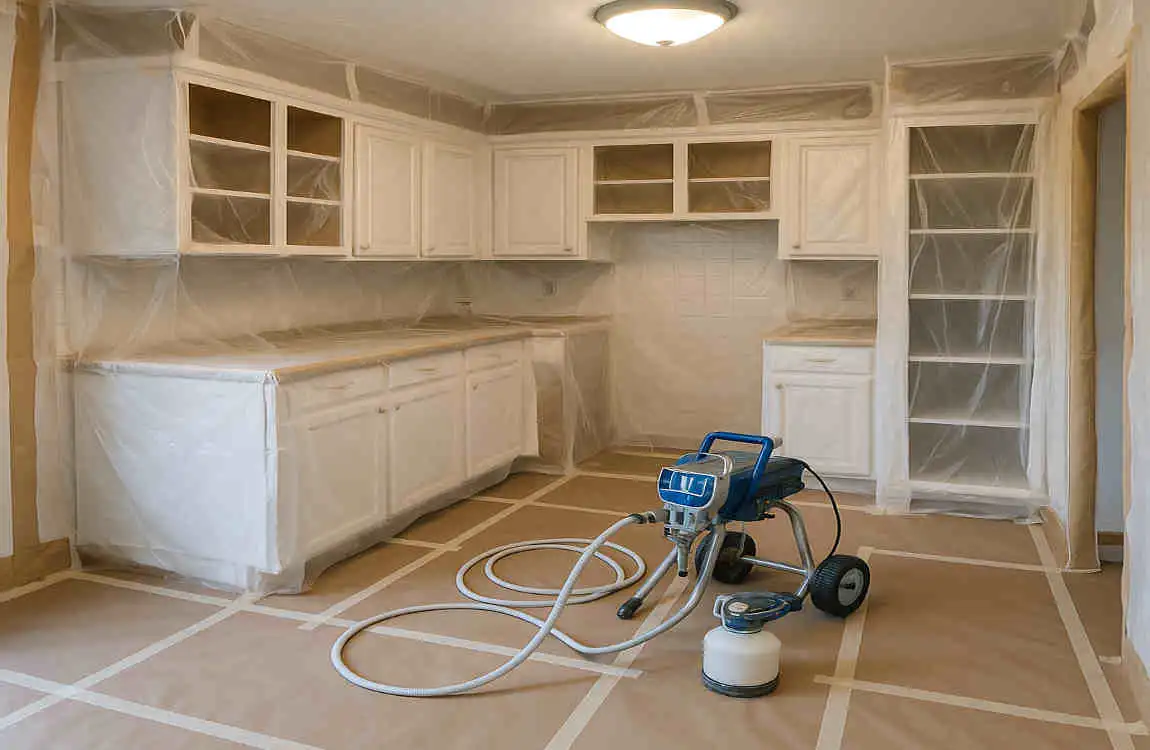
Before diving into the spray painting process, proper preparation is key. Start by clearing out your cabinets thoroughly. Remove all items and take off cabinet doors and hardware, like knobs and hinges. This ensures a smooth painting surface.
Next, clean the surfaces thoroughly to eliminate grease and grime. A mixture of warm water and mild soap works wonders here. Rinse well to ensure no residue remains.
Once cleaned, consider sanding the surfaces lightly with fine-grit sandpaper. This step helps the paint adhere better for a lasting finish. Don’t forget to wipe down everything after sanding; any dust left behind can ruin your work.
Lay down drop cloths or newspapers beneath your workspace for protection against overspray. With these steps complete, you’re ready to tackle that home kitchen transformation!
Step-by-step guide to spray painting your kitchen cabinets with canned paint

Start by removing all cabinet doors and hardware. Label each door for easy reassembly later.
Next, clean the surfaces thoroughly to eliminate grease and grime. A simple soap-and-water solution works well.
After drying, lightly sand the cabinets to create a smooth surface for paint adhesion. Wipe away dust with a damp cloth.
Set up your workspace in a well-ventilated area. Cover floors and countertops with drop cloths to protect against overspray.
Shake your spray paint can vigorously for about two minutes before use. Hold the can 10–12 inches from the surface for an even application.
Apply light coats in sweeping motions, overlapping slightly with each pass. Allow adequate drying time between coats as recommended on the label.
Once dry, reattach hardware and hang doors back onto cabinets carefully. Enjoy your refreshed kitchen look!
Can You Use Canned Spray Paint for Kitchen Cabinets? FAQ
Can I use canned spray paint for kitchen cabinets?
Yes, you can use canned spray paint for kitchen cabinets, but it is generally not recommended for large-scale projects. Canned spray paint is better suited for small touch-ups or painting a single cabinet or two. For an entire kitchen, it may not provide the best results due to uneven coverage, limited paint output, and higher costs.
What are the pros of using canned spray paint for cabinets?
- Ease of Use: Canned spray paint is convenient and doesn’t require professional equipment. It’s great for small DIY projects or quick touch-ups .
- Smooth Finish: When applied correctly, canned spray paint can provide a smooth, even finish without brush strokes .
- Affordable for Small Jobs: If you’re only painting one or two cabinets, canned spray paint can be a cost-effective option .
What are the cons of using canned spray paint for cabinets?
- Limited Coverage: A single can of spray paint typically covers only about 20 square feet, making it impractical and expensive for painting an entire kitchen.
- Uneven Results: The low output of aerosol cans can lead to dry spray, uneven sheen, or streaky finishes, especially on large surface .
- Physical Strain: Using canned spray paint for extended periods can be tiring, and your finger may become sore from holding down the nozzle.
- Durability Concerns: Canned spray paint may not be as durable as professional-grade paint applied with a sprayer, especially in high-traffic areas like kitchens.
What alternatives are better for painting kitchen cabinets?
- HVLP or Airless Paint Sprayers: These tools provide a more even and professional finish, especially for large projects. They are faster and more efficient than canned spray paint.
- Brush and Roller: For DIYers, using a brush and roller is a more affordable and beginner-friendly option. It requires fewer supplies and provides good results with proper preparation.
How can I ensure the best results if I use canned spray paint?
If you decide to use canned spray paint, follow these tips for the best results:
- Prep the Surface: Clean, sand, and prime the cabinets to ensure the paint adheres properly.
- Use High-Quality Spray Paint: Opt for brands like Rust-Oleum Painter’s Touch 2X Ultra Cover, which includes paint and primer in one.
- Apply Thin Coats: Spray in light, even coats to avoid drips and achieve a smooth finish .
- Work in a Ventilated Area: Wear protective gear like gloves, goggles, and an N95 mask to protect yourself from fumes.
- Allow Proper Drying Time: Let each coat dry completely before applying the next to avoid smudging or uneven texture.
Is canned spray paint cost-effective for kitchen cabinets?
Canned spray paint is not cost-effective for large projects. Painting an entire kitchen with spray cans would require multiple cans, making it more expensive than using a paint sprayer or traditional brush-and-roller methods.
What is the best use case for canned spray paint on cabinets?
Canned spray paint is ideal for:
- Small touch-ups or repairs.
- Painting a single cabinet or a small section.
- DIYers who want a quick and easy solution for minor projects.

